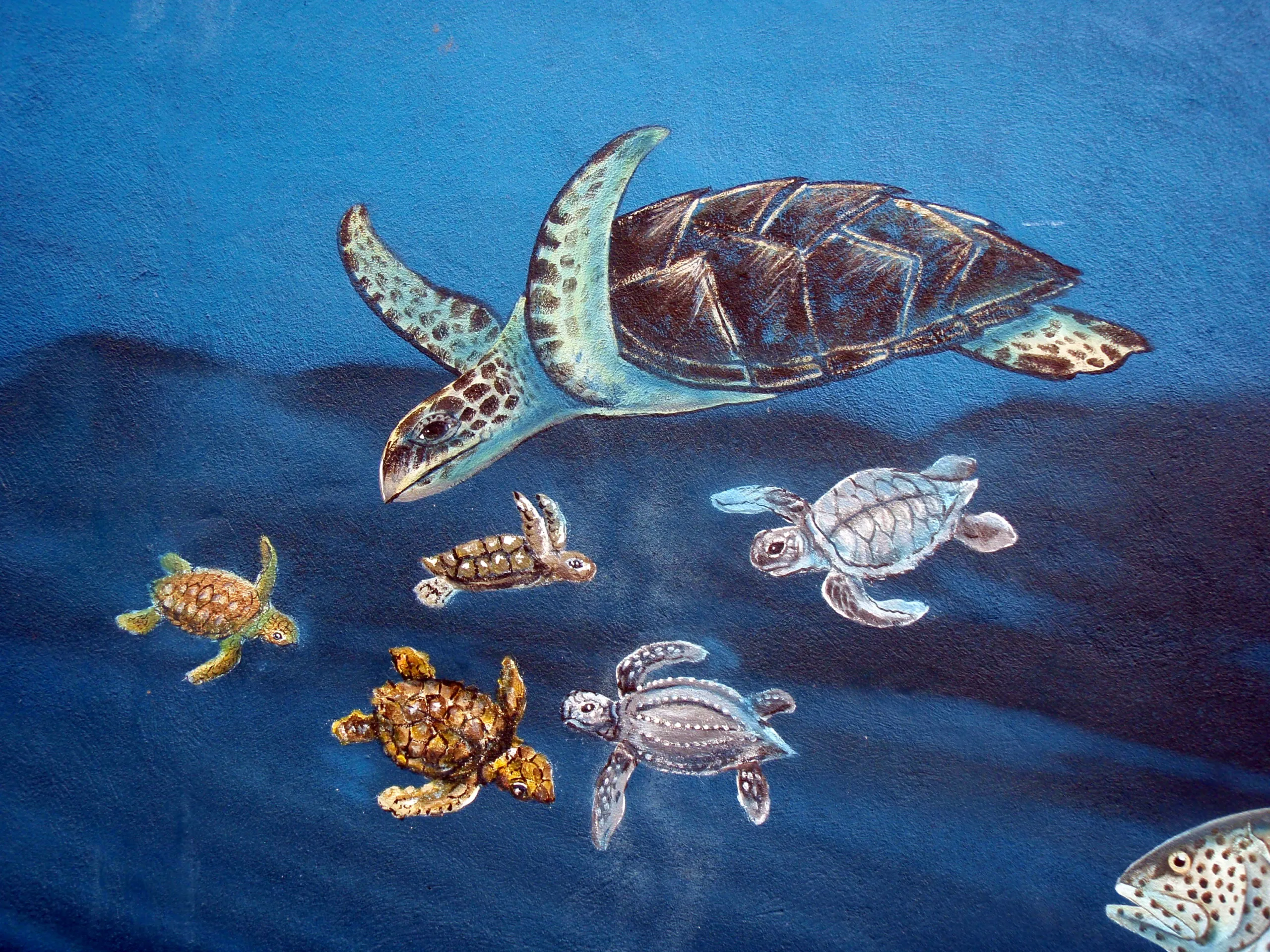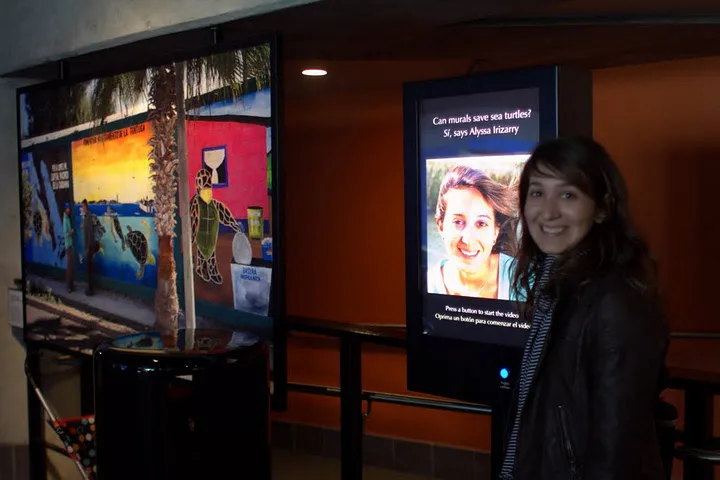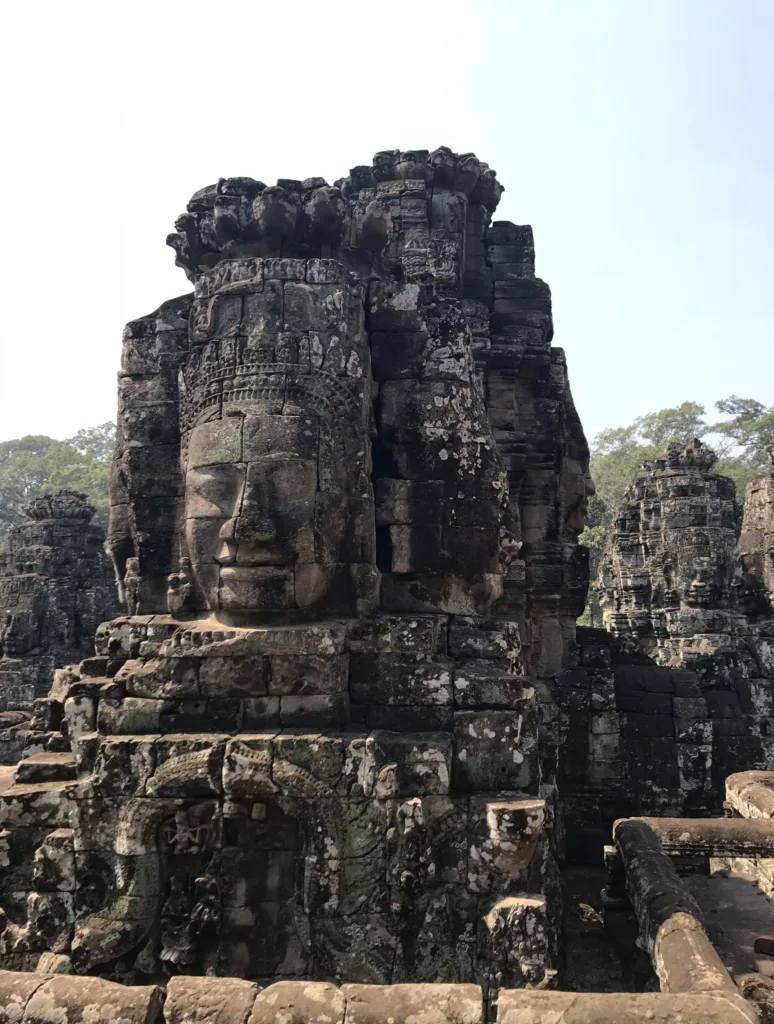The Artist’s Role in Shaping Environmental Attitudes
Consider this: How do the artist and the scientist come together to shape individuals’ environmental attitudes and behaviors?
I used this question as a jumping off point for my Directed Research project at The SFS Center for Coastal Studies in Baja California Sur, Mexico, in the spring of 2009. As an art history and environmental studies double major, I was interested in the connection between what many people would often view as two dissimilar fields. (Cue the question: “What are you going to do with that?”).

However, several towns in Baja had prominent sea turtle murals painted by school groups or local conservation NGOs, and I had a hunch: if the visual arts could be used to advertise consumer goods, couldn’t they also be used to communicate with and educate local community members on issues of marine conservation?
Through surveys and interviews, I asked community members if they had seen a mural, and if yes, in what way did it affect them? After weeks of data collection and analysis, it turned out that the murals were, in fact, visible, and the responses suggested that the murals were more than just a decorative piece of art. The data suggested that the murals influenced community members’ attitudes and behaviors towards sea turtle conservation.
These results opened my eyes to how artists — passionate about the environment — could work alongside biologists and others who sought to create awareness and positive change. Art can be used in science classrooms to challenge students to think creatively in problem solving. Art can be used as a means to start a dialogue in a community. Perhaps most importantly, art can remind individuals that their environment is beautiful and worth protecting.

Answering this question led to some interesting outcomes for me personally. My SFS research won The Forum on Education Abroad Undergraduate Research Award, a national study abroad award. My work is also now part of a permanent exhibit at The Monterey Bay Aquarium. The Ocean Travelers gallery features the work of environmental artists, Chris Jordan, Bryant Austin, and Alison McDonald, and builds awareness of environmental issues affecting the ocean and how people can help. For more information, check out The Monterey Bay Aquarium’s SeaNotes blog. The research was published in 2014 in Ocean and Coastal Management. You can access the article here.
Here are a few other SFS alums that have used their environmental interests for creating pieces of art that educate, challenge, and inspire:
Anne Kubitsky SFS Mexico ’04 has written and illustrated a book, Graycie’s Catch, based on the true events of a whale rescue off the coast of California. The first draft of the book is being sold as a coloring book, inviting readers to interact and become artists themselves. Through collaboration with scientist and ocean activist, Wallace J. Nichols, Anne hopes to connect the book to the Live Blue Initiative to connect young readers to the idea of ocean conservation.
Check out Anne’s illustrations here: annekubitsky.com/
Sadie Runge SFS Australia/New Zealand ‘10 of the University of Richmond organized and produced The James River UFO, an Environmental Art Performance Event, which protested pollution in the river. Sadie collected chicken by-products from a local farm and reused them to create a floating raft of feathers, which have been shown to absorb toxic heavy metals from water. The project aims to create awareness for contamination in the river and prompt community dialogue and action.
For more info on the project and the artist, visit: jamesriverufo.wordpress.com/
Matt Richter SFS Bhutan ’10 pursued photojournalism and environmental studies as an undergraduate at Boston University, participated in SFS’s first summer program in Bhutan, and returned to Bhutan as an intern. Matt uses his camera to explore both his cultural and natural surroundings, and his photographs provide an intimate view into daily life in remote villages and communities in the Himalayas.
To view a collection of Matt’s Bhutan photography, check out: www.fieldstudies.org/news/Bhutan-Photography-by-Matt-Richter_2198
Cornelia Carpenter SFS Kenya ’09 illustrated the book, Mgunga: A Day in the Life of an Umbrella Thorn Acacia, inspired by her experience living and studying in the East African savannah. The story is told through pictures and illustrates the significant relationship that the acacia tree has with every creature in the savannah.
Cornelia is currently pursuing her passion for cartography. She recently completed a trip to Australia, where she explored the landscape to create a map that will be featured in a documentary DVD, “Restoring Community; Community Restoration across the Wet Tropics.” Her maps feature the local flora, fauna, and culture of a landscape, and serve as both functional and nostalgic pieces of art.
You can read an article about Cornelia and get a glimpse of her maps here: www.fieldstudies.org/news/Mapping-the-Rainforest_2210
Cornelia’s Website:
www.corneliacarpenter.com/maps.php
How do you think that the artist and the scientist can, should, or must work together to change our behaviors and attitudes about the environment? How are you doing this? Let us know.
Related Posts

Alumni Reflections: Stories of the Return to Kenya

